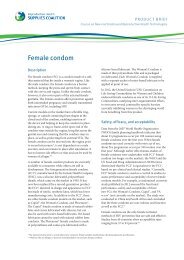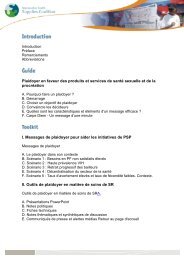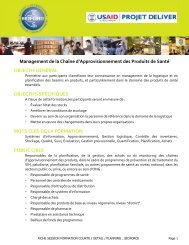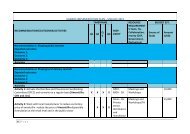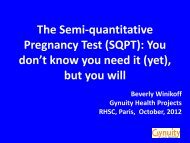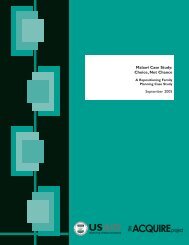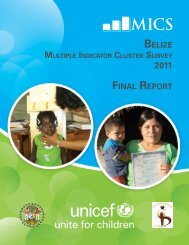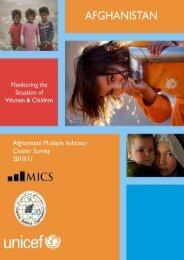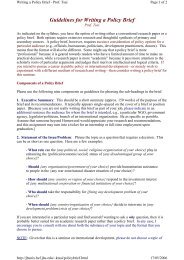EVERY WOMEN EVERY CHILD UN COMMISSION ON LIFE-âSAVING
EVERY WOMEN EVERY CHILD UN COMMISSION ON LIFE-âSAVING
EVERY WOMEN EVERY CHILD UN COMMISSION ON LIFE-âSAVING
- No tags were found...
Create successful ePaper yourself
Turn your PDF publications into a flip-book with our unique Google optimized e-Paper software.
Specific issues identified Provider issues: There is limited/updated knowledge on management of neonatal sepsis (assessment, dosage) among in-‐service health workers. This leads to insufficient use of antibiotics for neonatal sepsis indications, fear of ototoxicity due to overdose of gentamycin and fear of overuse of Ceftriaxone Formulation/ market shaping: Innovative delivery systems (pre-‐filled, single-‐use syringe, auto-‐disable, small syringes, safe retractable syringes, intravenous line) for gentamicin is technically feasible but there are regulatory barriers and are recommended. Ceftriaxone has an excellent safety profile and efficacy when used once daily but available packaging is not cost effective and associated with wastage and increased chances of loss of potency when one vial is mixed and not completely used under poor storage conditions Evidence/ regulatory issues: The national standards for newborn health recommend use of ampicillin instead of procaine penicillin yet WHO does not recommend ampicillin for neonatal sepsis treatment. Gentamycin toxicity (primarily hearing damage) when overdosed in neonates and greater risk in preterm and asphyxiated babies. Awareness/ demand Implementation plan The priority actions are linked to promoting the correct use of available products.: a) Immediate plan • Add an addendum on EML and treatment guidelines to include gentamicin and ceftriaxone for neonatal sepsis management (in appropriate packaging and strengths with accompanying supplies) at all health facility levels as appropriate i.e. pre-‐referral gentamicin at HC II plus Ceftriaxone at HC III to Hospital level). Hold stakeholder meetings to reach consensus on EML review and develop respective addendums. • Conduct refresher training for in-‐service health workers and integrate latest updates in neonatal sepsis management in pre-‐service curricula for all health workers cadres. b) Intermediate plan • Also review and disseminate protocols on management of neonatal sepsis and administration of antibiotics to neonates and establish TWGs and convene meetings/workshops to review protocols and job aids and review of training packages.



